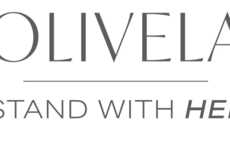
Supporting Global Artisans
Rebecca Byers — September 4, 2012 — Social Good
References: shoppingforachange.org & trendhunter
Stacey Horowitz is the founder of Shopping for a Change, a nonprofit organization that pays its artisans up front and splits its proceeds between community involvement projects that focus on water sanitation, education and healthcare abroad and a US charity of the customer’s choosing.
SocialBusiness.org recently caught up with Stacey Horowitz to discuss the inspiration behind Shopping for a Change and how she resets to be creative.
1. How do you get your inspiration?
Three simultaneous events led to the creation of Shopping for a Change. Approaching the age of 50, I felt a stronger need than ever to contribute to society on a global scale. During that time, our son’s seventh-grade class was entrenched in a philanthropic project that was interwoven through their entire curriculum. The inspiration and education we all received reached beyond the classroom and into our lives.
In late 2008 early 2009 our family traveled to The Galapagos Islands and Peru. We witnessed the struggles of hunger and poverty in sharp contrast against the innate beauty of these regions. Having noticed the wealth of artistic talent passed down through generations, we knew given the right circumstances, this could be their means to a better life.
Realizing, but for an accident of birth, it could have been me living under similar conditions, I arrived home no longer the same person as before I left. Both as a mother and artist I connected strongly with what I saw. We learned many women were the sole providers for their families, and had been affected by atrocities such as illness, spousal abuse, war, unemployment, and death. Sadly, their situations were not unique, as like circumstances exist throughout the world.
Shopping for a Change was developed to empower these talented artisans, predominantly women, and their impoverished communities, with means to transform their standards of living in economically sustainable ways. In addition to paying the artisans up front for their creations, our nonprofit organization splits the net proceeds from your purchases in two ways: we fund Community Improvement Projects abroad with our focus on clean water, health care, and education; and afford you, the consumer the ability to direct net proceeds to the nonprofit organization of your choice at checkout.
2. How did the idea for the business model come about?
Even though my initial desire was spawned by the three events noted above, I did not want to overlook the fact that there is a severe need for financial aid right here at home. There are people suffering in our own communities. Nonprofit organizations throughout the US are struggling to raise funds, especially during the economic recession. I thought if we could both assist in creating a sustainable living for the artisans abroad and aid organizations here domestically, we would have a winning model. We make it possible for US-based nonprofits to create a supplemental revenue stream through our Fund raise for Change program. They don’t have to peddle our products directly, they just need to inform their supporter base that when they shop our site and choose their favored organization during the checkout process, it designates 50% of the net proceeds to go back to their chosen nonprofit. Any 501 (c)(3) nonprofit organization is eligible. There is no charge to the partnering organizations, and no need to disclose their supporter’s private information to us. We provide our partners with tasteful tools to help promote us to their communities. As with any type of advertising, the more people are reminded, the more likely they are to remember, so partners who regularly promote our alliance will tend to reap more benefits.
3. How did you decide to join this sector?
My background is in advertising, marketing, wholesale and retail sales in the fashion and beauty industries and I am a multi-media artist. This was a way to utilize all of my background. The areas in which I lack experience we try to make up for through our Board of Directors and Advisory Board. For me, it is not about making a living doing this…everyone involved is a volunteer including myself. It is about giving back. We want the most funds possible to go back into the Community Improvement Projects we are doing abroad, and the partnering nonprofit organizations here at home.
4. How do you reset yourself to be creative? Do you have any rituals?
When I was first doing research, developing our concept and looking for artisan groups around the world, I was extremely inspired listening to a multiple artists album created in Peter Gabriel’s Real World Studios, called Big Blue Ball. I am a huge Peter Gabriel fan and this album is the perfect blend of world music infused with a little rock & roll. Now a days when I am writing, I work best in complete silence, accompanied by our dogs and the breeze outside. Otherwise, I love to work while listening to my favorite stations on Pandora.
SocialBusiness.org recently caught up with Stacey Horowitz to discuss the inspiration behind Shopping for a Change and how she resets to be creative.
1. How do you get your inspiration?
Three simultaneous events led to the creation of Shopping for a Change. Approaching the age of 50, I felt a stronger need than ever to contribute to society on a global scale. During that time, our son’s seventh-grade class was entrenched in a philanthropic project that was interwoven through their entire curriculum. The inspiration and education we all received reached beyond the classroom and into our lives.
In late 2008 early 2009 our family traveled to The Galapagos Islands and Peru. We witnessed the struggles of hunger and poverty in sharp contrast against the innate beauty of these regions. Having noticed the wealth of artistic talent passed down through generations, we knew given the right circumstances, this could be their means to a better life.
Realizing, but for an accident of birth, it could have been me living under similar conditions, I arrived home no longer the same person as before I left. Both as a mother and artist I connected strongly with what I saw. We learned many women were the sole providers for their families, and had been affected by atrocities such as illness, spousal abuse, war, unemployment, and death. Sadly, their situations were not unique, as like circumstances exist throughout the world.
Shopping for a Change was developed to empower these talented artisans, predominantly women, and their impoverished communities, with means to transform their standards of living in economically sustainable ways. In addition to paying the artisans up front for their creations, our nonprofit organization splits the net proceeds from your purchases in two ways: we fund Community Improvement Projects abroad with our focus on clean water, health care, and education; and afford you, the consumer the ability to direct net proceeds to the nonprofit organization of your choice at checkout.
2. How did the idea for the business model come about?
Even though my initial desire was spawned by the three events noted above, I did not want to overlook the fact that there is a severe need for financial aid right here at home. There are people suffering in our own communities. Nonprofit organizations throughout the US are struggling to raise funds, especially during the economic recession. I thought if we could both assist in creating a sustainable living for the artisans abroad and aid organizations here domestically, we would have a winning model. We make it possible for US-based nonprofits to create a supplemental revenue stream through our Fund raise for Change program. They don’t have to peddle our products directly, they just need to inform their supporter base that when they shop our site and choose their favored organization during the checkout process, it designates 50% of the net proceeds to go back to their chosen nonprofit. Any 501 (c)(3) nonprofit organization is eligible. There is no charge to the partnering organizations, and no need to disclose their supporter’s private information to us. We provide our partners with tasteful tools to help promote us to their communities. As with any type of advertising, the more people are reminded, the more likely they are to remember, so partners who regularly promote our alliance will tend to reap more benefits.
3. How did you decide to join this sector?
My background is in advertising, marketing, wholesale and retail sales in the fashion and beauty industries and I am a multi-media artist. This was a way to utilize all of my background. The areas in which I lack experience we try to make up for through our Board of Directors and Advisory Board. For me, it is not about making a living doing this…everyone involved is a volunteer including myself. It is about giving back. We want the most funds possible to go back into the Community Improvement Projects we are doing abroad, and the partnering nonprofit organizations here at home.
4. How do you reset yourself to be creative? Do you have any rituals?
When I was first doing research, developing our concept and looking for artisan groups around the world, I was extremely inspired listening to a multiple artists album created in Peter Gabriel’s Real World Studios, called Big Blue Ball. I am a huge Peter Gabriel fan and this album is the perfect blend of world music infused with a little rock & roll. Now a days when I am writing, I work best in complete silence, accompanied by our dogs and the breeze outside. Otherwise, I love to work while listening to my favorite stations on Pandora.
Trend Themes
1. Empowering Global Artisans - Shopping for a Change supports artisans in impoverished communities by providing them with sustainable means to improve their standards of living.
2. Socially Conscious Consumerism - Shopping for a Change allows consumers to direct net proceeds to their chosen nonprofit organization, fostering a sense of social responsibility while shopping.
3. Hybrid Fundraising Model - Shopping for a Change's business model creates a supplemental revenue stream for US-based nonprofits, combining support for artisans abroad with aid organizations at home.
Industry Implications
1. Nonprofit Organizations - Shopping for a Change's fundraising model provides financial aid for nonprofit organizations struggling to raise funds in today's economic climate.
2. Arts and Crafts - Shopping for a Change empowers talented artisans, predominantly women, in the arts and crafts industry by connecting them with a global market.
3. Fashion and Beauty - Shopping for a Change's founder's background in the fashion and beauty industries connects these worlds with social entrepreneurship, offering consumers ethically made products.
0.9
Score
Popularity
Activity
Freshness























